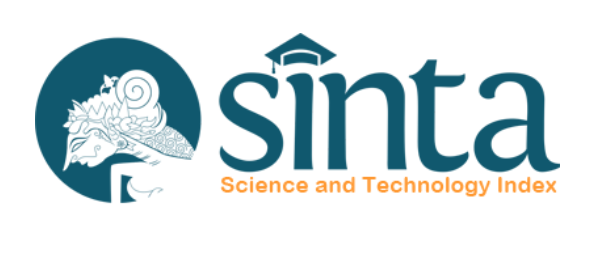THE EFFECT OF COLLECTIVISM DIVERSITY TOWARDS MULTICULTURAL TEAMWORK PERFORMANCE AMONG RESTAURANT EMPLOYEES
DOI:
https://doi.org/10.12928/joves.v2i2.1180Keywords:
Collectivism diversity, Cooperation, Diversity, Multicultural teamwork performance, Production.Abstract
Diversity is now an important factor that impacted workforce performance. Currently, as having a diverse workforce, Malaysia is depending heavily on foreign workers in the hospitality industry. This study examined a conceptual model investigating the effect of diversity particularly collectivism in influencing multicultural teamwork performance. A self-administered questionnaire was conducted in casual ethnic restaurants in Klang Valley, Malaysia. The findings disclosed that collectivism diversity had a significant influence on multicultural teamwork performance. This study is the first to assess cultural value diversity particularly collectivism value on teamwork performance. This study verified that cultural value diversity increases multicultural teamwork performance in the restaurant context in relation to collectivism. The significant results deepen our understandings of the detailed relationships among the variables. In addition, by providing the current phenomena in workforce industry, this study provides insights to the restaurant managers in handling diversity among multicultural employees.
References
Barak, M. E. M. (2013). Managing diversity: Toward a globally inclusive workplace. Thousand Oaks: Sage Publications.
Bhadury, J., Mighty, E. J., & Damar, H. (2000). Maximizing workforce diversity in project teams: A network flow approach. Omega, 28, 143-153.
Campion, M. A., Medsker, G. J., & Higgs, A. C. (1993). Relations between work group characteristics and effectiveness: Implications for designing effective work groups. Personnel Psychology, 46, 823–850.
Dienes, D., & Velte, P. (2016). The impact of supervisory board composition on CSR reporting. Evidence from the German twoâ€tier system. Sustainability, 8(1), 1–20. DOI: https://doi.org/10.3390/su8010063.
Eze, F., Okonkwo, O. M. L., Oluchi, M. L., & Igwebuike, E. C. (2019). Effect of workforce diversity on the competitiveness of Nigerian Bottling Company South East, Nigeria. International Academy Journal of Management, Marketing and Entrepreneurial Studies, 7(1), 8–24.
Hair, J. F., Black, W. C., Babin, B. J., & Anderson, R. E. (2010). Multivariate Data Analysis Seventh Edition. Upper Saddle River: Prentice Hall.
Hamid, B. A. (2009). The identity construction of women/maids in domestic help for hire discourse in selected Malaysian newspapers. European Journal of Social Sciences, 9(1), 168-180.
Higgs, M. (1996). Overcoming the problems of cultural differences to establish success for international management teams. Team Performance Management: An International Journal, 2(1), 36-43.
Kahane, L., Longley, N., & Simmons, R. (2013). The effects of coworker heterogeneity on firm-level output: assessing the impacts of cultural and language diversity in the National Hockey League. Review of Economics and Statistics, 95(1), 302-314.
Kirkman, B. L., & Shapiro, D. L. (2005). The impact of cultural value diversity on multicultural team performance. Academy of Management Journal, 18, 33-67.
Kreitner, R., & Kinichi, A. (2004). Organizational Behaviour. Boston: McGraw-Hill.
Lavaty, S., & Kleiner, B. H. (2001). Managing and understanding the French employee. Management Research News, 24(3/4), 45-48.
Lazear, E. (1999). Culture and language. Journal of Political Economy, 107(6), 29-95.
Maznevski, M. L., Distefano, J. J., Gomez, C. B., Noorderhaven, N. G., & Wu, P.-C. (2002). Cultural dimensions at the individual level of analysis: the cultural orientations framework. International Journal of Cross-Cultural Management, 2, 275–295.
Noordin, F. & Jusoff, K. (2010). Individualism-collectivism and job satisfaction between Malaysia and Australia. International Journal of Educational Management, 24(2), 159-174.
Norton, K., & Olds, T. (1996). Anthropometrica: A textbook of body measurement for sports and health courses. Sydney: UNSW Press.
Nunnally, J. (1978). Psychometric methods. New York: McGraw Hill.
Pallant, J. (2010). SPSS survival manual: A step by step guide to data analysis using SPSS (4th ed.). Maidenhead: Open University Press/McGraw-Hill.
Raudenbush, S. W., & Bryk, A. S. (2002). Hierarchical linear models: Applications and data analysis methods (2nd ed.). Thousand Oaks: Sage Publications.
Rajagopal, M. (2019). Negara 'dijajah' pendatang tanpa izin secara senyap. Berita Harian Online. Retrieved from: https://www.bharian.com.my/rencana/komentar/2019/03/542744/negara-dijajah-pendatang-tanpa-izin-secara-senyap.
Timmermans, B., Ostergaard, C. R., & Kristinsson, K. (2011). Does a different view create something new? The effect of employee diversity on innovation. Research Policy, 8(54), 500-509.
Tröster, C., Mehra, A., & van Knippenberg, D. (2014). Structuring for team success: The interactive effects of network structure and cultural diversity on team potency and performance. Organizational Behavior and Human Decision Processes, 124(2), 245-255.
Tsui, A. S., & Ashford, S. J. (1994). Adaptive self-regulation: A process view of managerial effectiveness. Journal of Management, 20, 93-121.
Downloads
Published
Issue
Section
License
Authors who publish with Journal of Vocational Education Studies (JOVES) agree to the following terms: Authors retain the copyright and grant the Universitas Ahmad Dahlan right of first publication with the work simultaneously licensed under a Creative Commons Attribution License (CC BY-SA 4.0) that allows others to share (copy and redistribute the material in any medium or format) and adapt (remix, transform, and build upon the material) the work for any purpose, even commercially with an acknowledgement of the work's authorship and initial publication in Universitas Ahmad Dahlan. Authors are able to enter into separate, additional contractual arrangements for the non-exclusive distribution of the journal's published version of the work (e.g., post it to an institutional repository or publish it in a book), with an acknowledgement of its initial publication in Universitas Ahmad Dahlan. Authors are permitted and encouraged to post their work online (e.g., in institutional repositories or on their website) prior to and during the submission process, as it can lead to productive exchanges, as well as earlier and greater citation of published work (See The Effect of Open Access).









.png)



